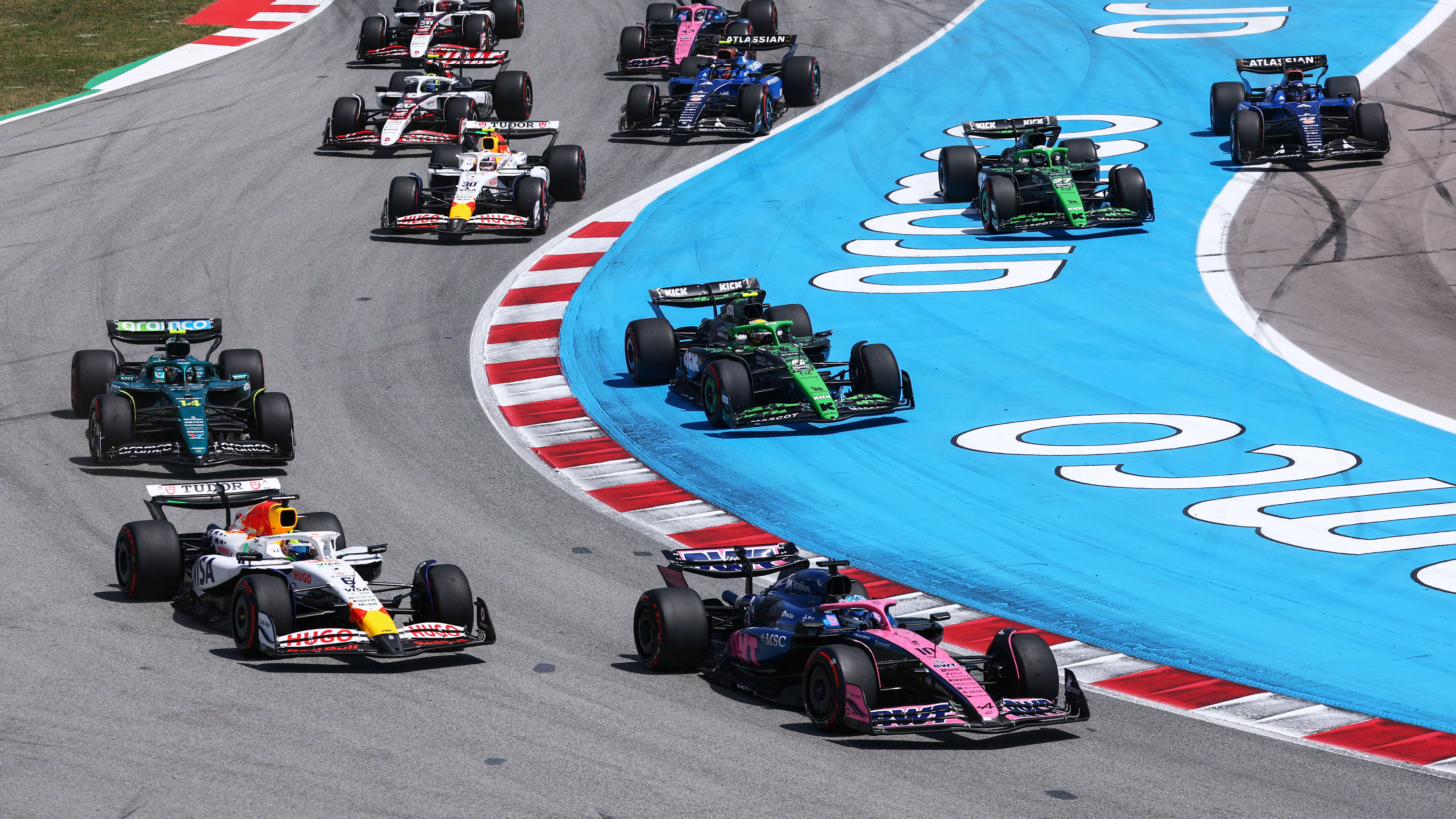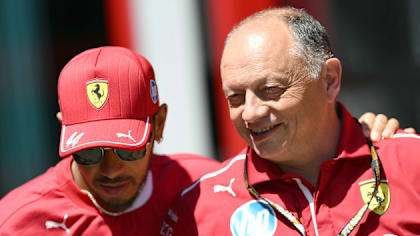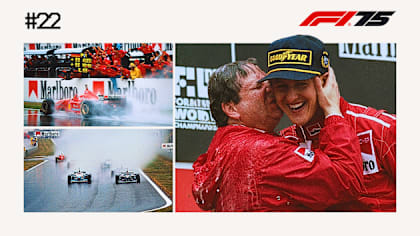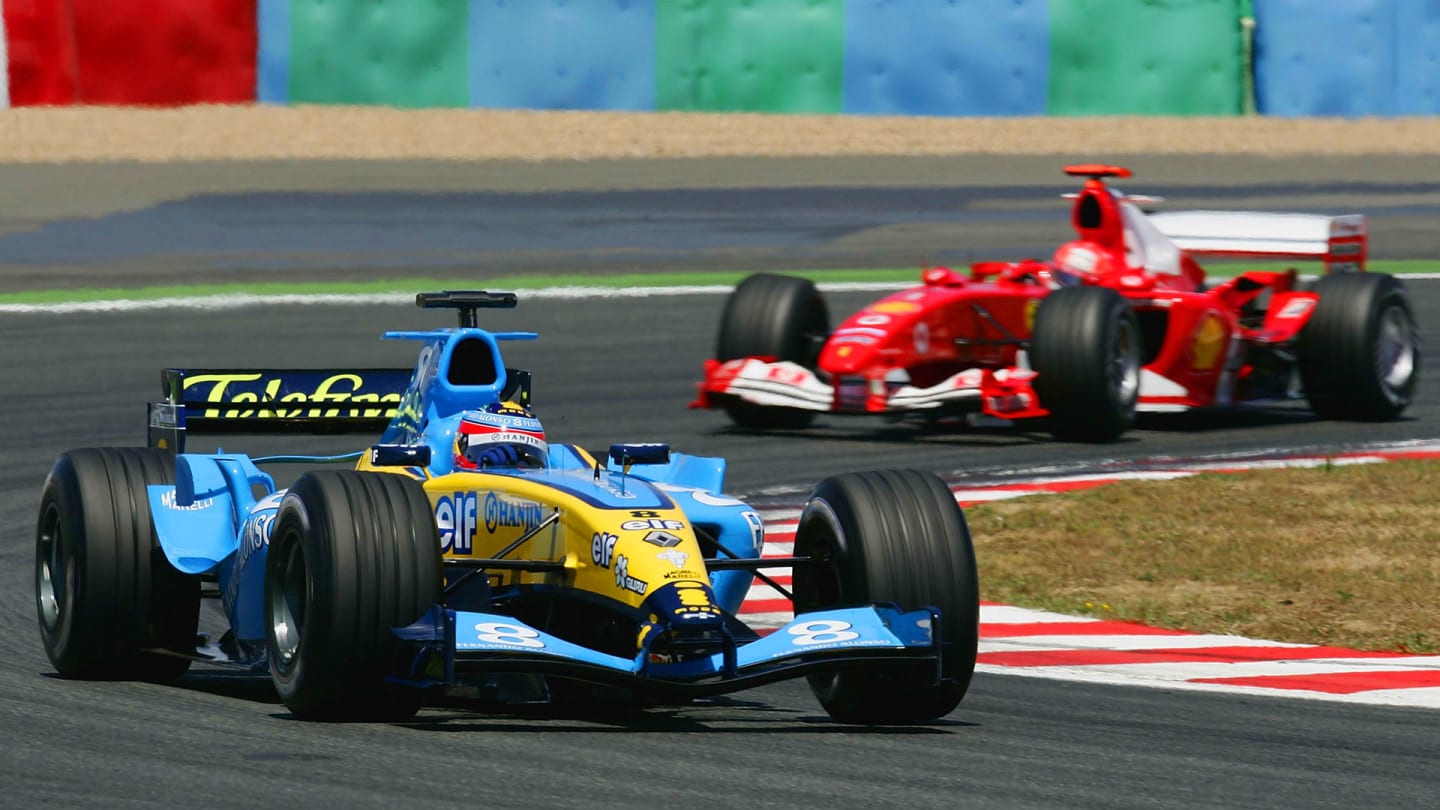
Feature
6 clever race strategies from F1 history that paid big
Share

Alex Albon’s unorthodox pit stop at the start of the last lap of the Australian Grand Prix allowed him to score Williams’s first point of the 2022 Formula 1 season.
Albon’s P10 was earned thanks to a combination of his marathon stint on hard Pirellis, Aston Martin driver Lance Stroll backing up Albon's midfield rivals and Williams taking a strategic risk.
Such unorthodox strategies are rare, but it’s not the first time in F1 history that an ostensibly strange strategy gambit has yielded a significant result.
1. Stirling Moss – 1958 Argentine Grand Prix
Finishing position: 1st
The combination of legendary privateer team owner Rob Walker and the incomparable Stirling Moss achieved some great successes, none more remarkable than victory in the 1958 Argentine Grand Prix. This was the result of what’s best described as a ‘strategic bluff’.
Driving a lightweight but underpowered 1.96-litre Cooper-Climax T43 – effectively an F2 car – Moss couldn’t match the pace of the 2.5-litre Ferraris. Worse still, its four-stud wheels took significantly longer to change than the knock-off single-nut wheels of the Ferraris.

Moss took his time to get into the lead, but once he had his nose in front, he never lost control
Walker and Moss made no secret of the time they expected to lose to stopping for tyres, but the clandestine plan was to make a single set of Continentals last to the finish.
STRATEGIC MASTERSTROKES: Moss bluffs his way to victory – and ushers in new era
Moss took the lead when Maserati driver Juan Manuel Fangio pitted. By the time Ferrari driver Luigi Musso realised what was happening and that the set of wheels poised in the Rob Walker pits was part of a ruse, it was too late to catch up.
Despite Moss’s caution on tyres on the brink of failure, driving on the oil-covered parts of the track to reduce the load late on, he held on to win by just under 2.7s and take the first win for a mid-engined car in F1.
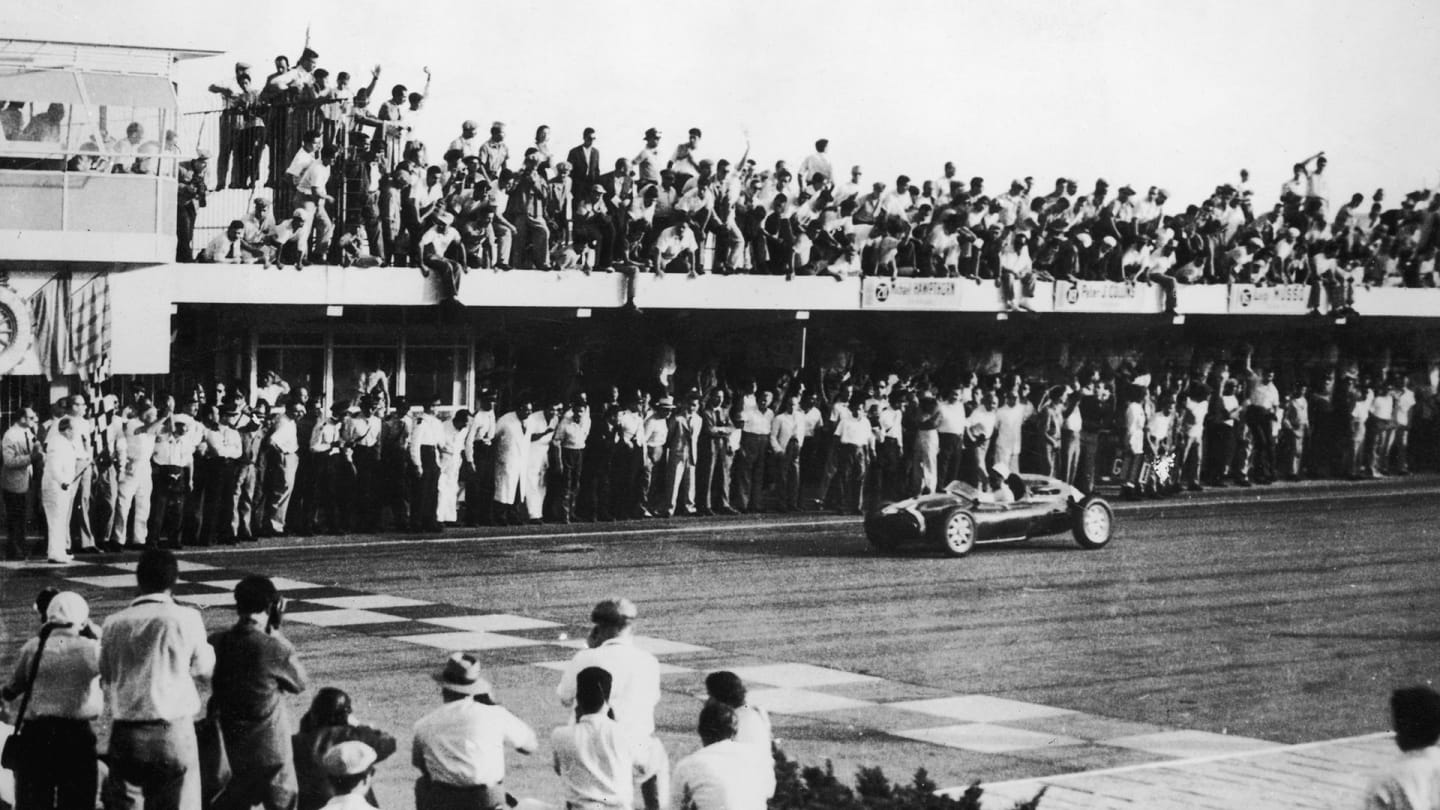
Moss crossed the finish line just 2.7s ahead of Musso's Ferrari, with the tyres on his compact, mid-engined Cooper-Climax T43 down to the canvas (Photo by Keystone/Hulton Archive/Getty Images)
2. Gerhard Berger – 1986 Mexican Grand Prix
Finishing position: 1st
Gerhard Berger and the Benetton team’s first Grand Prix victory in Mexico 1986 was the result of a no-pit stop strategy using Pirelli tyres.
Berger started fourth, ran in third place behind Nelson Piquet’s Williams and Ayrton Senna’s Lotus early on before being passed by Alain Prost’s McLaren – jumping ahead of all three when they made their pit stops.
PALMER: How Albon pulled off a blinding strategy call to take Williams' first point of the season
Berger took the lead on Lap 36 and expected to come under attack from those on fresh Goodyears behind him. Tyre wear wasn’t a concern, but degradation was, yet remarkably his Pirellis stood up well and proved consistent. He won by an astonishing 36 seconds from Prost.
A crucial part of the strategy was the risky decision to run a different tyre compound on each of the four corners of the car. This was to account not only for the extra load on the left side at a track compromising predominantly right-handers but also the varying demands on the front and rear axle. Pulling this off with the right tyre pressures was the tyre equivalent of alchemy.
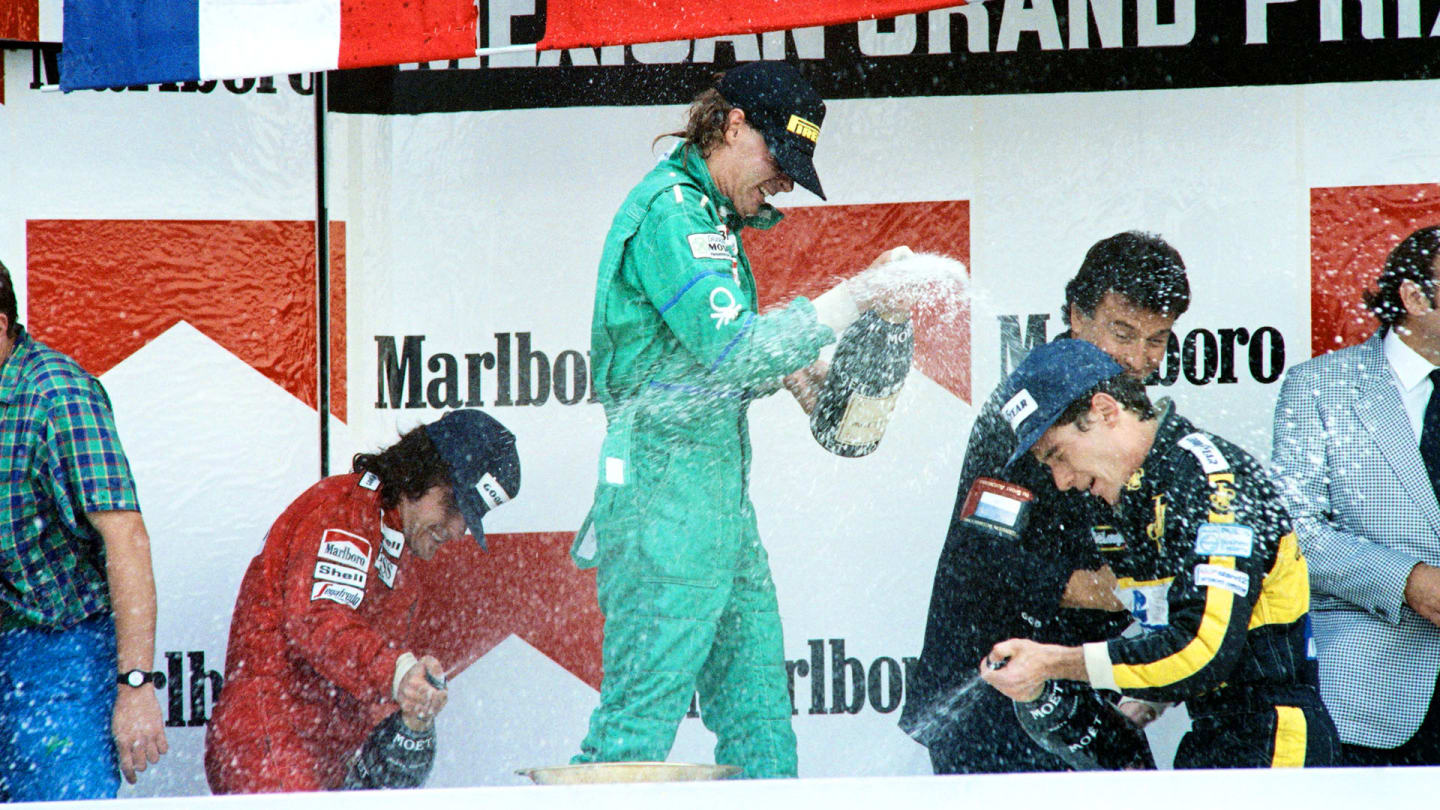
Berger and Benetton's smart strategy helped them win out over Alain Prost and Ayrton Senna
3. Mika Salo – 1997 Monaco Grand Prix
Finishing position: 5th
Rain meant the pace of the 1997 Monaco Grand Prix was slow, with fastest lap a massive 35 seconds off the pole position time. That meant the race ended at the two-hour limit, with 62 of the planned 78 laps completed – creating an opportunity for the minnow Tyrrell team to score their only points of the season.
With the rain coming and going, Tyrrell attempted to complete the race without a pit stop. While the underpowered Ford ED V8 engine wasn’t thirsty, it still required Salo to make changes to maximise economy once it became clear the strategy could work mid-race.
PODCAST: Mika Salo on life as a super sub, giving up certain victory, racing through injury and more
“We reduced the fuel mix and the revs and I started coasting through the corners to stay off the power,” said Salo, who also had front wing damage after being caught up in a second-lap incident. “I didn’t think we were going to make it. My tyres were shot and when it started raining again, I lost all grip and was lucky not to hit the wall.”
Salo, who was a lap down at the finish, held off second-row starter Giancarlo Fisichella's Jordan in the closing stages to take Tyrrell’s last F1 points finish.
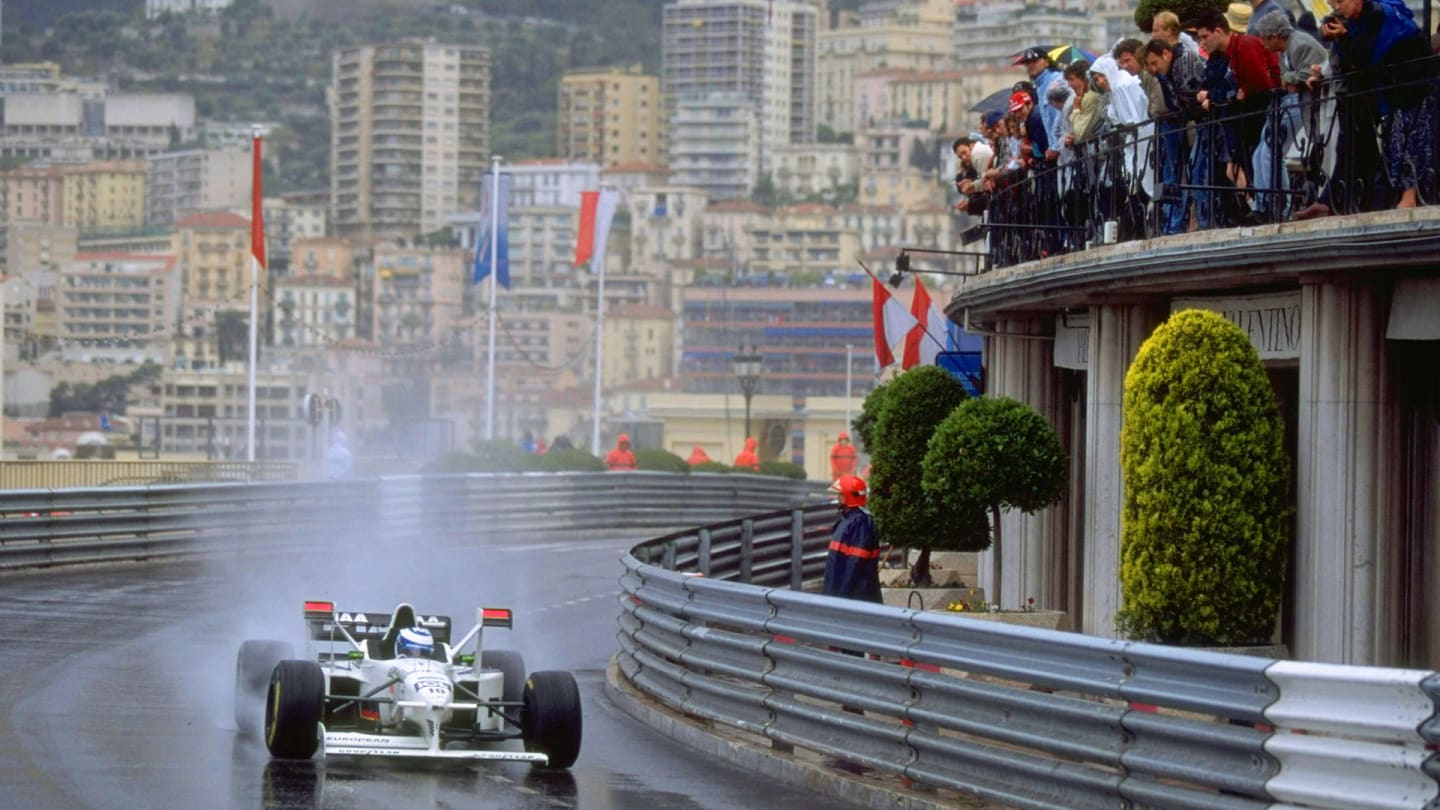
Salo netted the Tyrrell team's final F1 points
4. Giancarlo Fisichella – 2003 Brazilian Grand Prix
Finishing position: 1st
Giancarlo Fisichella qualified eighth for the 2003 Brazilian Grand Prix at Interlagos and held the position under the Safety Car deployed on the first lap. It was a dramatically improved performance for Jordan compared to the season’s first two races, which is why Fisichella argued against the counter-intuitive instruction to pit during that Safety Car period.
But this unorthodox move was with a clear objective in sight. The race was held in wet conditions and proved to be a crash-fest, with director of race and test engineering Gary Anderson hitting upon a bold plan. An early stop under the Safety Car allowed the car to be fuelled to get to 75% of the race distance without another stop – the point at which, in the case of a red flag, the Grand Prix wouldn’t be restarted. That led to Fisichella pitting at the end of Lap 7.
The strategy worked perfectly, with Fisichella passing McLaren’s Kimi Raikkonen for the lead into the Senna S on Lap 54. Then Mark Webber crashed his Jaguar after losing it on a damp patch, shedding a wheel that Fernando Alonso’s Renault collected. The result was a red flag.
Initially, victory was awarded to Raikkonen, but six days later the FIA corrected a timing countback error and Fisichella was declared the winner.
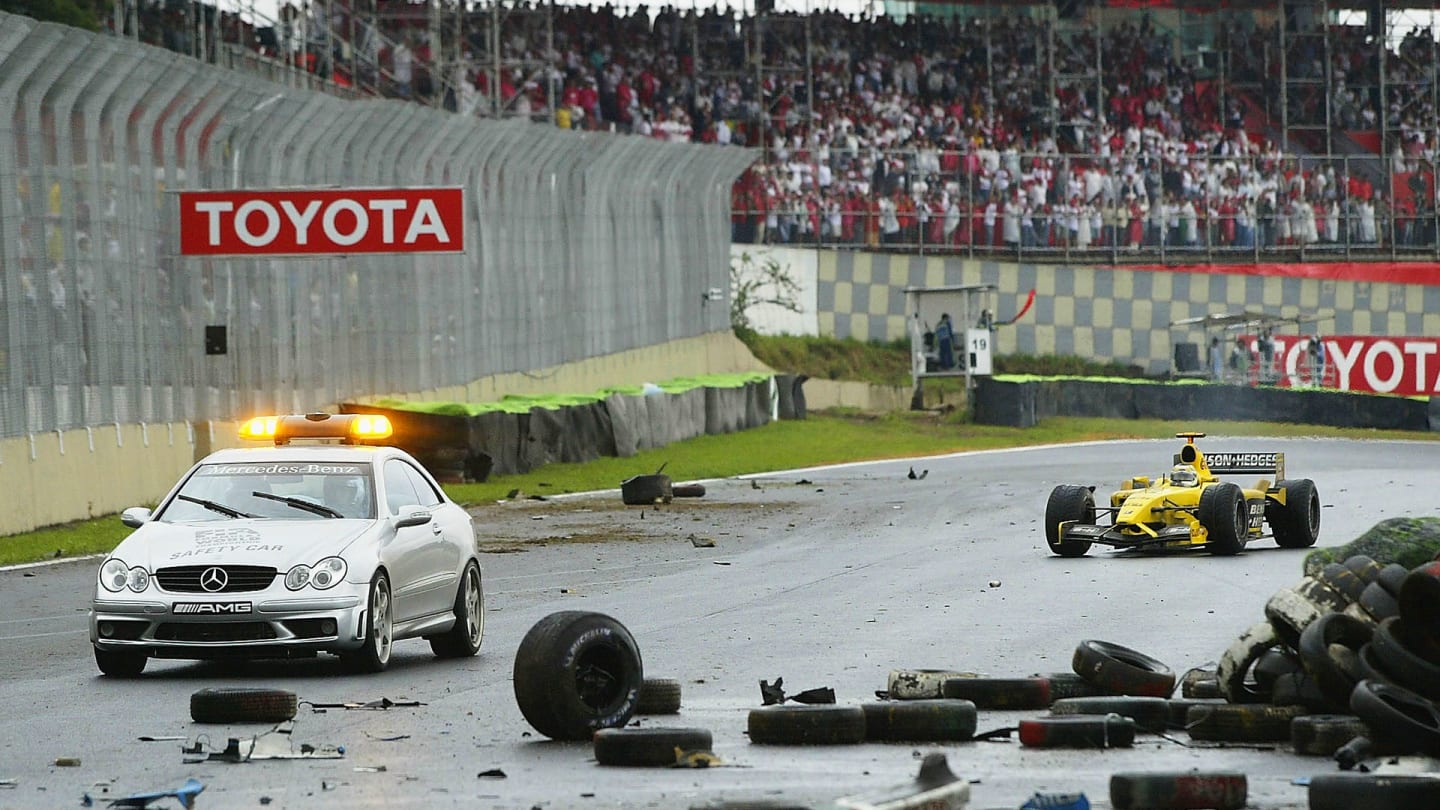
Jordan bet on chaos playing into their hands... and it worked
5. Michael Schumacher – 2004 French Grand Prix
Finishing position: 1st
Michael Schumacher started the French Grand Prix second behind Renault’s Fernando Alonso in a Ferrari that was fundamentally faster, but struggled to show that on a qualifying lap or in the first laps of a stint on its Bridgestone rubber.
Ferrari went into the race on a three-stopper, but strategist Luca Baldisserri also had a four-stop option in mind if Schumacher wasn’t in clear air. Having chased Alonso in the first two stints, Ferrari committed to four pit stops.
STRATEGIC MASTERSTROKES: How Ferrari stole victory from Renault with a secret 4-stop plan
Schumacher took on a relatively light load at his second stop on Lap 29. Alonso’s stop was brought forward, but still with three stops in mind, and the time lost on ageing Michelins at the end of his second stint meant he emerged from the pits behind Schumacher.
Schumacher could now get the hammer down and pulled out more than enough time through the third and fourth stints to emerge from his final stop on Lap 58 ahead of Alonso. Despite spending just over 15 seconds longer in the pit lane than Alonso across his four stops, Schumacher won by 8.329s.
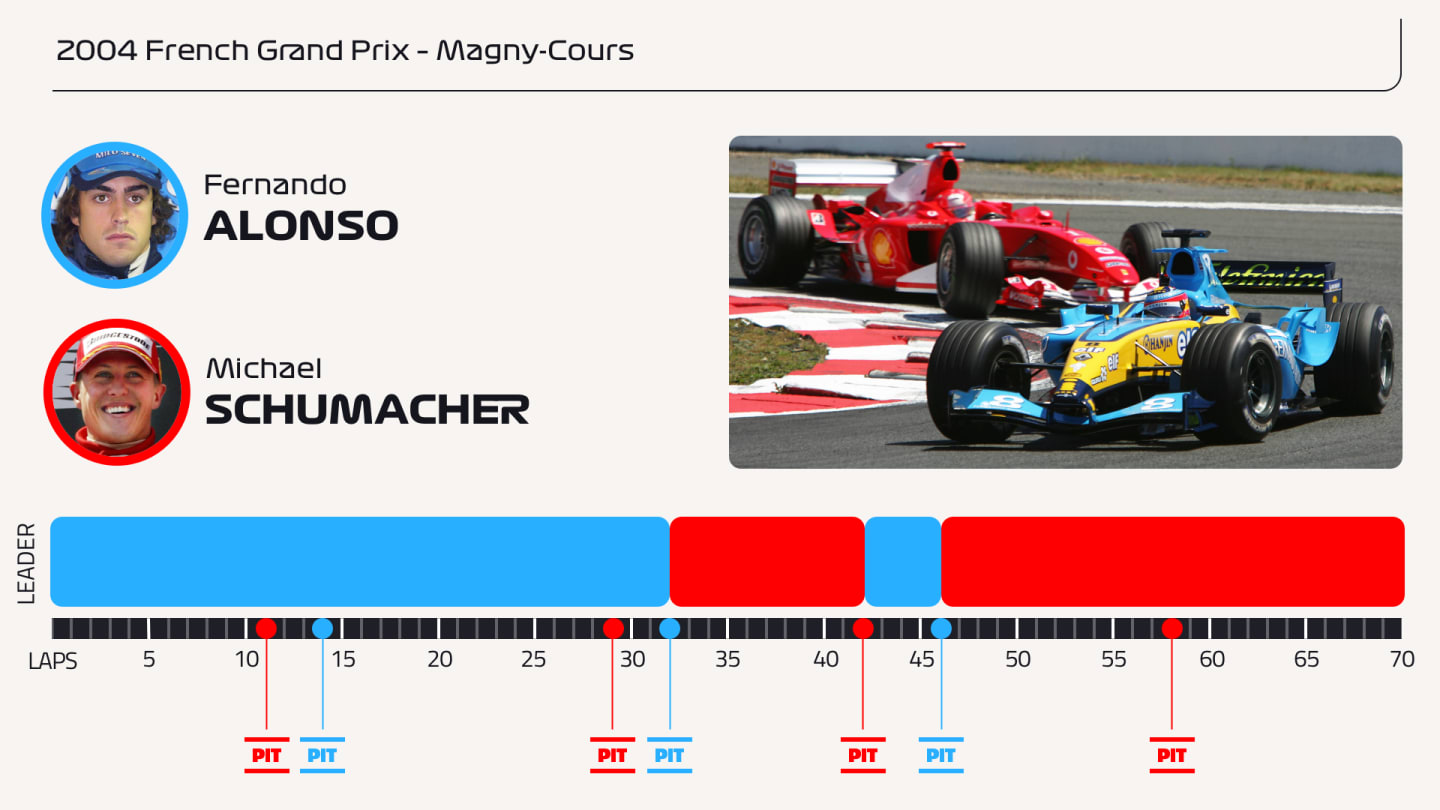
How the lead swung back and forth between pit stops
6. Sebastian Vettel – 2010 Italian Grand Prix
Finishing position: 4th
Red Bull driver Sebastian Vettel headed into the race at Monza planning to stop around Lap 14-15, yet in the end he stayed on his set of starting Bridgestones all the way to Lap 52. Just like Albon in Australia 2022, he made the obligatory pit stop to switch to the other tyre compound at the end of the penultimate lap.
The strategy worked beautifully. Vettel ran seventh in the first part of the race and despite his soft compound tyres losing a little grip, he was able to lap at a good pace throughout the stint thanks to capitalising on clear air. He was set to jump Williams driver Nico Hulkenberg and Renault’s Robert Kubica easily enough, but it was touch and go with the Mercedes of Nico Rosberg and team mate Mark Webber.
PODCAST: Listen to Sebastian Vettel reflect on his career and life outside F1 on Beyond The Grid
Traffic for Rosberg, who had Webber in tow, late in the race allowed Vettel to make his stop and emerge ahead to finish fourth. While it wasn’t a big result in itself, the fact that Vettel would go on to win the title by just four points made this strategic decision hugely significant.
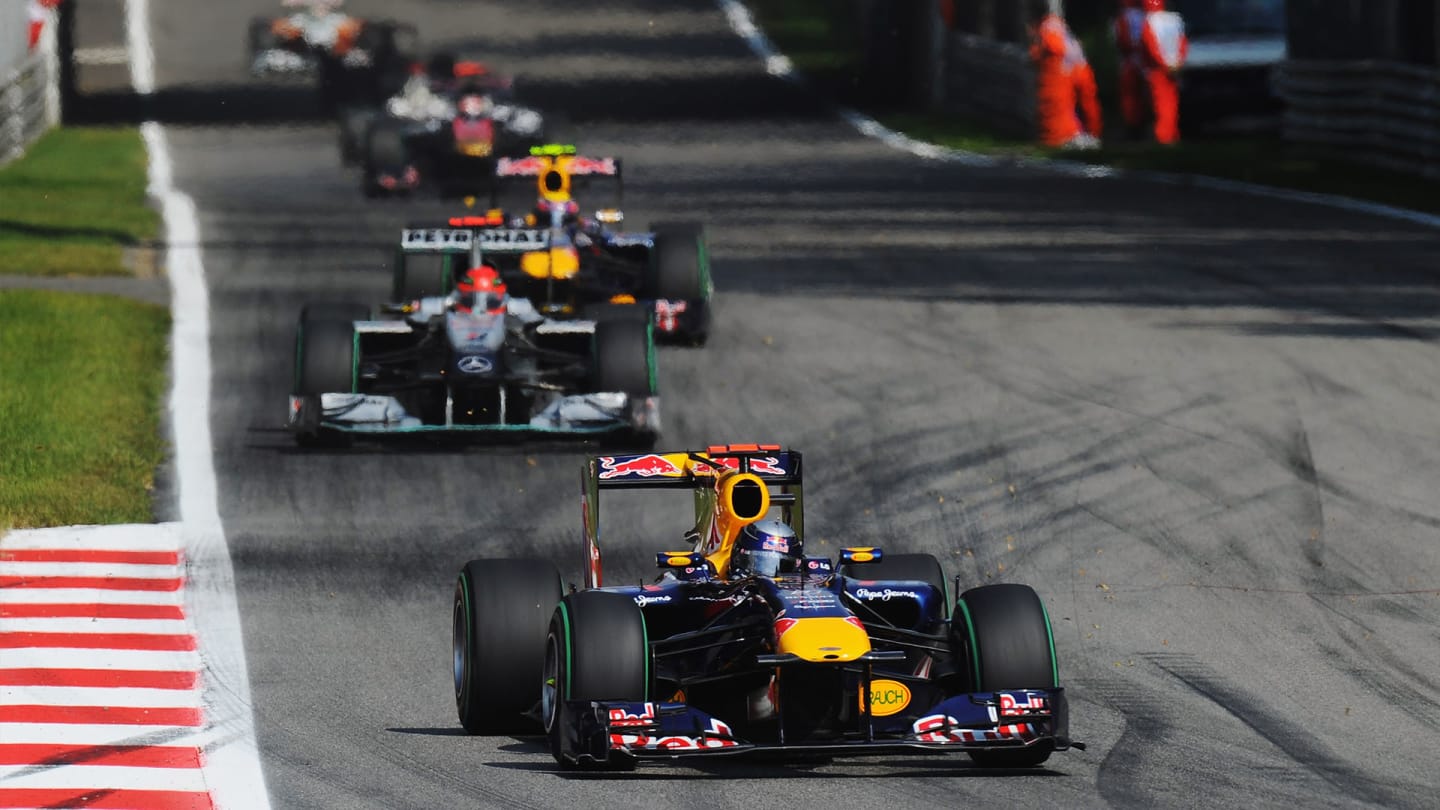
Vettel's long stint en route to P4 would net crucial points towards his first title
YOU MIGHT ALSO LIKE
News ‘I prefer to be second than fourth’ – Vasseur bullish as Ferrari jump Mercedes and Red Bull in the standings
Podcast F1 NATION: Piastri wins in dominant style as Verstappen gets everyone talking – it’s our Spain GP review
FeatureF1 Unlocked GREATEST RACES #22: Michael Schumacher seals one of his 'greatest ever' victories in atrocious conditions – 1996 Spanish Grand Prix
FeatureF1 Unlocked PALMER: How Oscar Piastri turned his weaknesses into strengths and became the championship favourite
